Cn-down > Domestic news > News content
2021-09-26 来源:羽绒金网 浏览量:2445
summary
The market price of gray duck down rose slightly last week.
The current market situation is relatively stable, and gray goose down is slightly stronger due to less raw materials and less inventory.In August, the export of down feathers and down jackets exceeded expectations, and with Vietnam’s adventurous opening up, the market is expected to gain stronger support.
Also in August, the epidemic and floods had an impact on the domestic consumer market, and clothing retail sales fell by 6% year-on-year. However, with the arrival of the Mid-Autumn Festival and National Day, retail is expected to gradually recover, and brands have started the 2021 winter down jacket marketing campaign.
In many places south of the Yellow River, the fall is so late this year that people can't feel La Niña approaching at all. The major meteorological departments actually hold different opinions on whether La Niña will appear, and clothing companies are generally cautious about this.
Exchange rate of USD to RMB: 6.4527
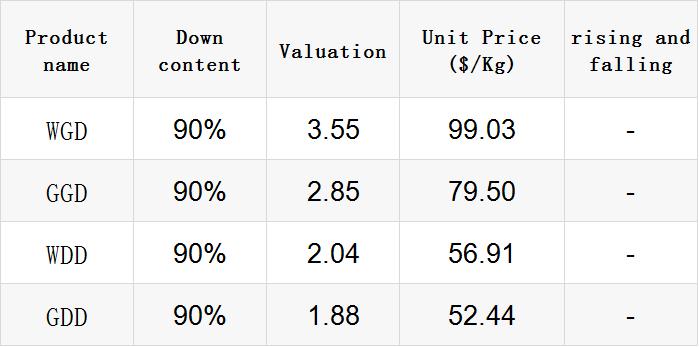
Exchange rate of USD to RMB: 6.4527

Exchange rate of USD to RMB: 6.4693
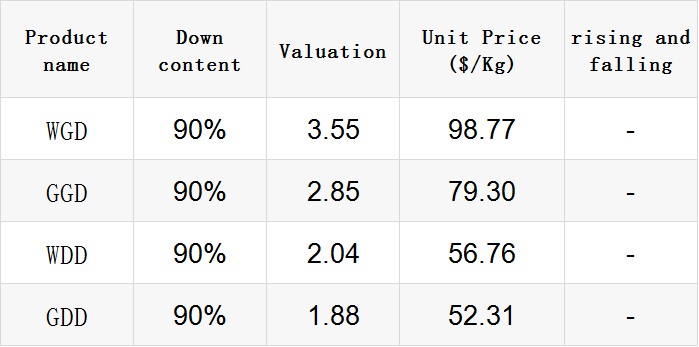
Exchange rate of USD to RMB: 6.4754
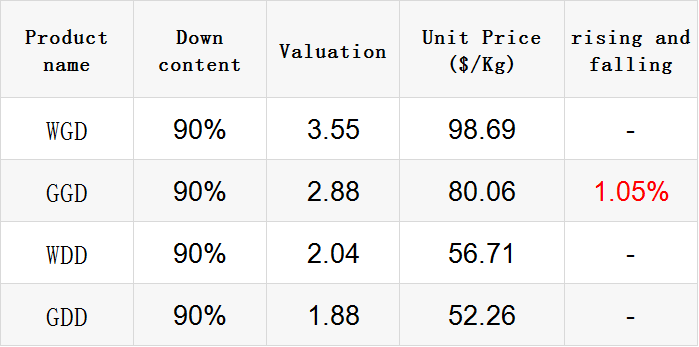
Exchange rate of USD to RMB: 6.4599
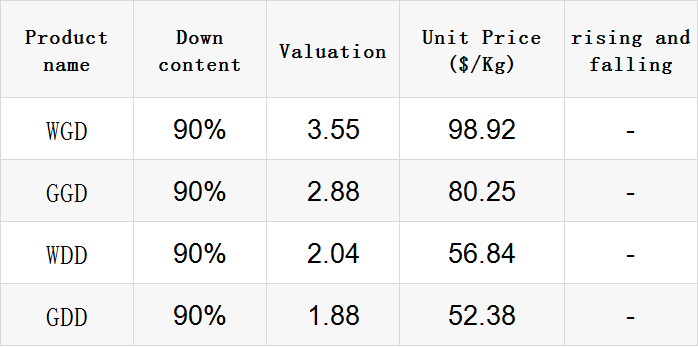
good news
According to the website of the Ministry of Commerce, on September 16, China's Minister of Commerce Wang Wentao submitted a written letter from China's official application to join the CPTPP to New Zealand Minister of Trade and Export Growth O'Connor, the depositary of the Comprehensive and Progressive Trans-Pacific Partnership (CPTPP).
At present, the founding members of CPTPP include 11 countries including Australia, Japan, Canada, New Zealand, Singapore, Vietnam, Mexico, etc., covering a total of 500 million people around the world. The total production of these countries amounts to 11 trillion US dollars, accounting for approximately global GDP. Of 13%.
If China joins the CPTPP, subject to stricter rules and standards and higher compliance costs, it is likely to increase imports to the United States, thereby reducing the trade deficit between the two countries; at the same time, joining the CPTPP means that China is willing to further open up the investment market. Accept higher standard investment terms. This will help resolve the structural contradictions in Sino-US relations.
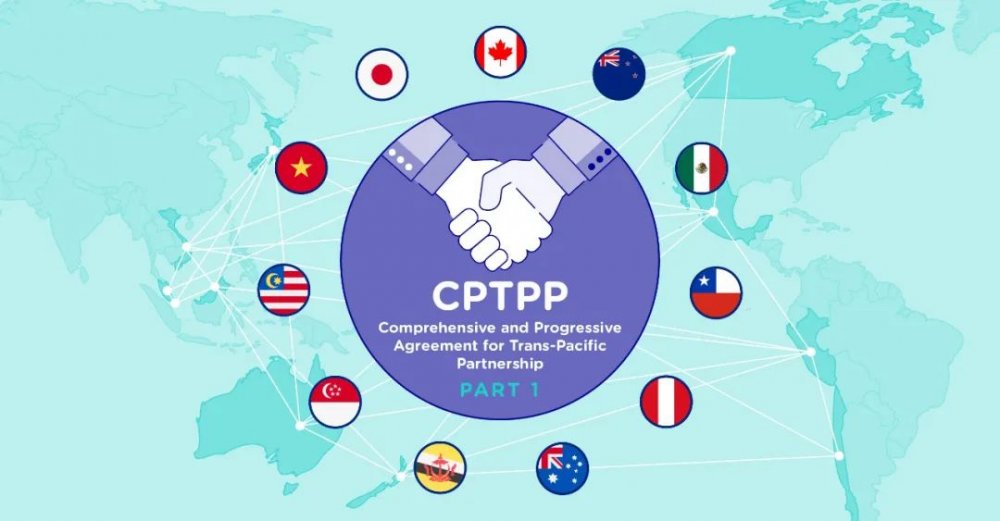
Statistics show that Mexico is China's second largest trading partner in Latin America, and China is Canada's second largest source of imports and the second largest export market. At present, my country has not signed relevant trade agreements with these two trading partners. After joining the CPTPP, this gap will be filled.
my country has joined the RCEP, and RCEP focuses on the traditional tariffs on trade in goods. This free trade zone includes the east coast and south coast of the Pacific Ocean, and CPTPP focuses more on service trade, high-tech, intellectual property, data flow and other new business fields. Joining CPTPP can strengthen services and various cooperation with the entire Pacific Rim 12 countries. Integration complements the deficiencies of RCEP.
A large-scale regional origin accumulation system will make it easier for companies to obtain preferential tariffs. CPTPP's origin determination methods include price method (based on the value of specific non-originating materials), deduction method (based on the value of non-originating materials), and value-added method (based on the value of original materials), as long as the product meets one of them The method of calculating regional value content is regarded as originating goods.
Citing Vietnamese media sources on September 18, the relevant Vietnamese authorities officially announced that the country has asked Ho Chi Minh City to deregulate areas with low COVID-19 infection rates in order to start production activities in supplier factories of multinational companies in the relevant regions.
After listening to expert opinions on resuming economic development, Ho Chi Minh City Party Committee Secretary Nguyen Van Nien said: “It’s time to consider safety measures related to keeping distance. Ho Chi Minh City has reached the time when it had to open up.”
However, as most of the workers left their jobs and returned to their hometowns, many companies fell into labor shortages. Nonetheless, all companies in Ho Chi Minh City are eager to release their stamina, reverse the situation, and regain a new life.
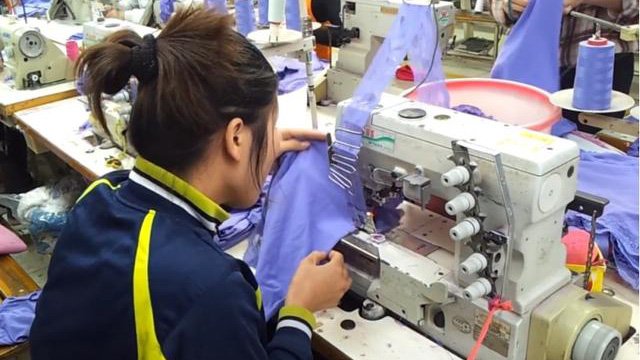
According to the budget, various textile companies are short of 85,000 laborers, and 10-20% of companies are launching "3 on-site" production with 5% of old employees. As they can't wait to resume work and production, companies must hurry up to recruit new employees.
Tai Binh Province worker Wu Jinxing said: “I worked in Ho Chi Minh City. During the outbreak, I did not have a job, so I returned to my hometown. Now I want to return to work, but there are still many inconveniences in moving across provinces. We all hope to be able to go back to work. Get the assistance of relevant units as soon as possible so that we can return to work safely."
bad news
After the autumnal equinox, the days gradually become shorter, the nights become longer and longer, the temperature difference between day and night gradually increases, and the temperature is lower day by day. At this time, the North has entered the mid autumn season, while in the south of the Yangtze River, the pace of autumn always seems to be slower.
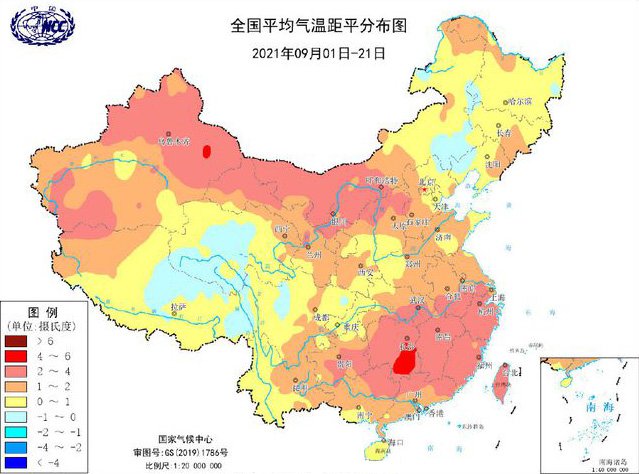
In September of this year, although there was a lot of rain in our country, the temperature was actually slightly higher than in previous years, and the places where there was not much rain were ridiculously hot. This shows that many places are going through a rare warm September, and this is actually related to the unusually strong subtropical high since autumn.
Activities in the westerly zone have also begun to intensify, and the northeast cold vortex is more active than usual, often throwing cold air southward. Under the violent collision of the cold and warm air, the rainfall in many parts of our country was severely overwhelming.
As the cold air began to strengthen, its impact on our country became obvious. From September 17th to 18th, the temperature in the Greater Khingan Mountains dropped sharply, and Mohe, Tuli River, Genhe and other places all fell below 0 degrees. . Among them, the Tuli River once fell to -5.9 degrees, and Mohe and other places have already provided heating in advance.

Many existing forecasts point out that there may be a significant drop in temperature in the northeastern region of my country at the end of September. As the intensity of cold air is relatively strong, the area below 0 degrees in northeastern my country may expand significantly after going south, and there may even be snowfall.
However, due to the strong subtropical high pressure in the south, it is difficult for the cold air to move south, and may only affect the north of the Yellow River. In this way, under the control of the subtropical high pressure, the heat in the south will actually continue.
Affected by factors such as reduced coal imports, environmental protection, and supply-side reforms, the price of thermal coal continues to rise.
Since more than 70% of my country's electricity comes from thermal coal power generation, coal prices can rise, but electricity prices are strictly restricted by the National Development and Reform Commission and cannot transmit inflation to downstream industries like steel mills, paper mills, and chemical plants.Therefore, we did not see an increase in the price of industrial electricity, but we waited for the notice of the power outage of the power plant.
Many places across the country are facing strict policy control and power shortages. Recently, Yunnan, Jiangsu, Qinghai, Ningxia, Guangxi, Guangdong, Sichuan, Henan, Chongqing, Inner Mongolia, Henan and other places have begun to implement measures to limit power consumption and control energy consumption for dual energy consumption control targets.
Some companies said that “if long-term electricity production, the current production capacity will definitely not be able to keep up with demand and can only further reduce orders.” For manufacturing companies, power curtailment will lead to a decline in the operating rate. This is not only delayed delivery, but also includes market raw material supply and changes in market conditions.
 热门排行
中国三大羽绒生产基地之—广东吴川
全球最奢侈羽绒服排行
一件羽绒服需要多少只鸭子的羽绒?
飞丝是什么?能代替羽绒?别被骗了,三种方法让你告别假羽绒服!
2017羽绒原料价格一路上涨,究竟为何?
你的羽绒服为什么钻绒?涨知识了
羽绒被的价格一般是多少 通过成本看羽绒被价格
中国羽绒服四大品牌调查:到底谁才是最强王者?
羽绒金网:羽毛、羽绒、毛绒计价
《羽绒羽毛》、《羽绒羽毛检验方法》新版标准发布,2017年7月1日实施
热门排行
中国三大羽绒生产基地之—广东吴川
全球最奢侈羽绒服排行
一件羽绒服需要多少只鸭子的羽绒?
飞丝是什么?能代替羽绒?别被骗了,三种方法让你告别假羽绒服!
2017羽绒原料价格一路上涨,究竟为何?
你的羽绒服为什么钻绒?涨知识了
羽绒被的价格一般是多少 通过成本看羽绒被价格
中国羽绒服四大品牌调查:到底谁才是最强王者?
羽绒金网:羽毛、羽绒、毛绒计价
《羽绒羽毛》、《羽绒羽毛检验方法》新版标准发布,2017年7月1日实施
 推荐阅读
“吴川力量”助中国羽绒接轨世界
中国三大羽绒生产基地之—广东吴川
中羽协第二期新国标培训班 在“羽绒之乡”广东吴川成功举办
羽绒之乡:贵港桥圩镇将打造旅游休闲特色小镇
广西贵港桥圩镇:打造中国羽绒休闲旅游特色小镇
羽绒金网:羽毛、羽绒、毛绒计价
羽绒别急着收 中央气象台发布寒潮蓝色预警 部分地区降温超12℃
上海消保委检测 千元鹅绒被用鸭毛绒填充
冻哭丨降温10℃!鸡年首个寒潮预警来袭,你准备好了吗?
传统羽绒产业如何实现转型升级?四川玉泉镇产业集群发展
推荐阅读
“吴川力量”助中国羽绒接轨世界
中国三大羽绒生产基地之—广东吴川
中羽协第二期新国标培训班 在“羽绒之乡”广东吴川成功举办
羽绒之乡:贵港桥圩镇将打造旅游休闲特色小镇
广西贵港桥圩镇:打造中国羽绒休闲旅游特色小镇
羽绒金网:羽毛、羽绒、毛绒计价
羽绒别急着收 中央气象台发布寒潮蓝色预警 部分地区降温超12℃
上海消保委检测 千元鹅绒被用鸭毛绒填充
冻哭丨降温10℃!鸡年首个寒潮预警来袭,你准备好了吗?
传统羽绒产业如何实现转型升级?四川玉泉镇产业集群发展